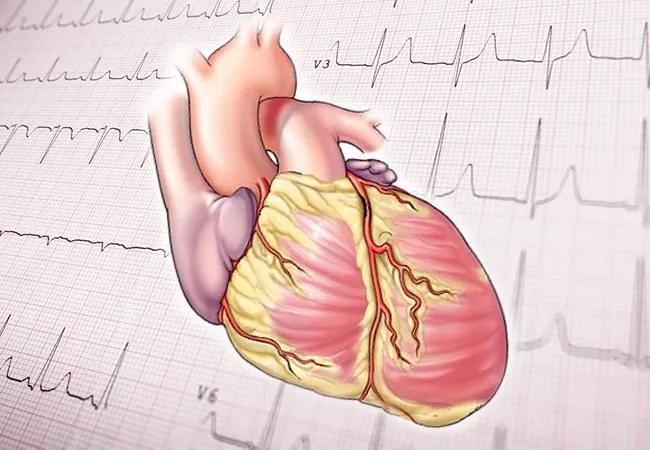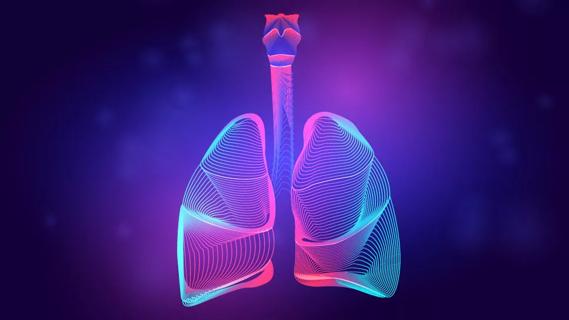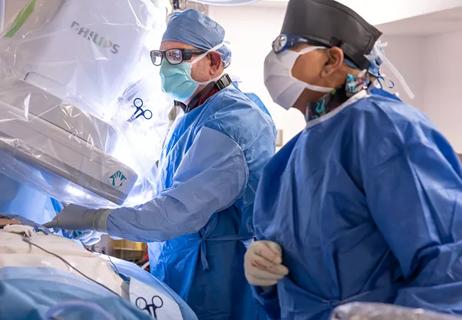Indications and issues concerning cardiac resynchronization therapy, conduction system pacing

Conduction system pacing (CSP) is increasingly used as a permanent pacing strategy to address atrioventricular conduction dyssynchrony, thereby slowing or preventing development of heart failure. But when is it indicated over cardiac resynchronization therapy (CRT), which is backed by much stronger evidence garnered over decades of experience?
Advertisement
Cleveland Clinic is a non-profit academic medical center. Advertising on our site helps support our mission. We do not endorse non-Cleveland Clinic products or services. Policy
This question and others concerning cardiac physiologic pacing (CPP) are addressed in the first practice guideline exclusively on the subject, published online in Heart Rhythm by the Heart Rhythm Society in partnership with the Asia Pacific Heart Rhythm Society and the Latin American Heart Rhythm Society.
“The uses of CSP as well as its comparisons to CRT are very active areas of investigation at the moment,” says guideline chair and first author Mina Chung, MD, a cardiologist in Cleveland Clinic’s Section of Cardiac Pacing and Electrophysiology. “We can expect much more evidence to emerge over the next decade, but this guideline — which has been preceded only by consensus statements on the topic — provides a very up-to-date profile of the state of the field.”
The guideline defines CPP as any method of cardiac pacing intended to restore or preserve synchrony of ventricular contraction. It includes two major strategies:
Advertisement
The new guideline describes situations that are likely (or not likely) to derive benefit from CPP and provides an algorithm with specific recommendations for either CRT or CSP in different scenarios. Dr. Chung highlights the following recommendations from the document:
Dr. Chung notes that CRT still has class I recommendations for patients with heart failure, LVEF of 35% or less, LBB block, QRS duration of at least 150 ms, and New York Heart Association functional class II to IV symptoms on guideline-directed medical therapy. “For such patients, CRT has been well demonstrated to save lives and should be tried first,” she emphasizes. “For those who cannot benefit from CRT or have characteristics that do not meet criteria for its use, the guideline provides new recommendations for CSP strategies.”
Advertisement
The 60-member international writing group developed the guideline to be relevant to medical practice worldwide. Its chief focus is to provide recommendations for the use of CPP, including for heart failure and for patients who are pacemaker candidates. Topics include patient selection, preprocedure evaluation and preparation, implant management, follow-up and response optimization, and CPP use in pediatric populations.
“This guideline represents an international multidisciplinary collaborative effort that provides not only clinical practice guidance on the latest techniques in pacing therapies, but also how patients and clinicians may consider such options together in establishing shared care goals,” says guideline co-author W.H. Wilson Tang, MD, Research Director for the Section of Heart Failure and Cardiac Transplantation Medicine at Cleveland Clinic. “Incorporating specific recommendations for optimal clinical management before, during and after placement of cardiac physiologic pacing devices emphasizes an important and holistic approach to treat and prevent heart failure beyond discussions of their clinical indications.”
“This is a very important step in helping physicians choose appropriate electrical therapies for their patients,” adds guideline co-author and Cleveland Clinic electrophysiologist John Rickard, MD, MPH. “For the first time, we have a guideline that makes recommendations for the use of conduction system pacing as well as multidisciplinary care clinics to best serve our patients. Cleveland Clinic was among the first to establish a large multidisciplinary combined electrophysiology/heart failure clinic for the care of heart failure patients with conduction disorders. The new guideline took notice of this clinic and shows strong support for the spread of such clinics globally.”
Advertisement
One issue that challenged the committee when evaluating evidence, Dr. Chung notes, was that definitions of response to CRT and clinical improvement often differ among studies. Some patients ― sometimes referred to as “stabilizers” or “nonprogressors” ― appear not to achieve reverse remodeling with CRT, yet they have a slowing of the expected progression of heart failure. The committee proposed using the term “favorable responder” to include such patients (for any form of CPP) versus “unfavorable responder” for those who appear not to derive any benefit.
“With a significant proportion of patients not responding to CRT, it’s critical to distinguish real failure from apparent failure,” Dr. Chung explains. “This distinction serves to improve quality of care and supports appropriate use of therapeutics, our overarching goals for this guideline.”
Advertisement
Advertisement

Experts are challenging the one-size-fits-all paradigm

Decongestion, therapy titration and readmission rates comparable to those with traditional hospital care

Panel proposes staging and treatment protocols that support harmonized evaluation and management of heart failure in patients with congenital heart disease

Eminent clinician-researcher brings special expertise in nutritional interventions for heart failure

Recent volume and outcomes data in two major realms of cardiovascular care

Volatile organic compounds have potential in heart failure diagnostics

Basic understanding of condition and treatment is lacking

First-in-world implantation performed at Cleveland Clinic